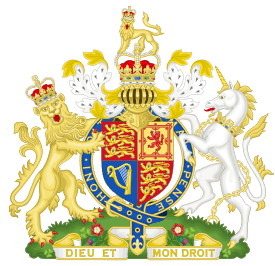Imperial Service Medal
The Imperial Service Medal is a medal affiliated with the Imperial Service Order. The medal was established under the statutes of the Imperial Service Order, on 8 August 1902, by King Edward VII.[1] It is presented to selected civil servants who complete at least 25 years service, upon their retirement.
| Imperial Service Medal (ISM) | |
|---|---|
  Obverse and reverse of the medal | |
| Awarded by Her Majesty The Queen | |
| Eligibility | Civil Servants of the United Kingdom, the Dominions, Colonies, Protectorates, and Overseas Territories. |
| Awarded for | 25 years of meritorious service |
| Post-nominals | (ISM) |
| Statistics | |
| Established | 8 August 1902[1] |
| Last awarded | Still awarded. (Discontinued in Australia since 1993) |
| Order of Wear | |
| Next (higher) | Polar Medal[2] |
| Next (lower) | Indian Police Medal[2] |
Ribbon bar of the medal | |
Appearance
When originally created the Imperial Service Medal was a seven-pointed star, or a laurel wreath for women, in the same pattern as the Imperial Service Order, but with the star or laurel in bronze.[3] In 1920 an amendment of the statutes changed the appearance of the medal to its current form of as a circular silver medal, 32 mm (1.3 in) in diameter, bearing the effigy of the reigning sovereign on the obverse.[4] To date, here have been six versions:[5]
 George V, 1920-31. Inscribed GEORGIVS V D. G. BRITT: OMN: REX F. D. INDIAE. IMP.
George V, 1920-31. Inscribed GEORGIVS V D. G. BRITT: OMN: REX F. D. INDIAE. IMP. George V, crowned head 1931-37. Inscribed GEORGIVS VI DEI. GRA. BRITT. OMN REX. FID. DEF.
George V, crowned head 1931-37. Inscribed GEORGIVS VI DEI. GRA. BRITT. OMN REX. FID. DEF. George VI, 1937-48. Inscribed GEORGIVS VI D: G: BR: OMN: REX ET INDIAE IMP:
George VI, 1937-48. Inscribed GEORGIVS VI D: G: BR: OMN: REX ET INDIAE IMP: George VI, 1948-53. Inscribed GEORGIVS VI DEI: GRA: BRITT: OMN: REX FID: DEF:
George VI, 1948-53. Inscribed GEORGIVS VI DEI: GRA: BRITT: OMN: REX FID: DEF: Elizabeth II, 1953-54. Inscribed ELIZABETH II D: G: BR: OMN: REGINA F.D.
Elizabeth II, 1953-54. Inscribed ELIZABETH II D: G: BR: OMN: REGINA F.D. Elizabeth II, since 1954. Inscribed ELIZABETH II DEI GRATIA REGINA F.D.
Elizabeth II, since 1954. Inscribed ELIZABETH II DEI GRATIA REGINA F.D.
The reverse bears the image of a naked man resting from his labours[5] with the inscription "For Faithful Service".[4][6] The name of the recipient is impressed on the rim of the medal. Recipients are listed in the London Gazette.[7]

References
- "No. 27463". The London Gazette. 8 August 1902. p. 5171.
- "No. 56878". The London Gazette (Supplement). 17 March 2003. p. 3352.
- Captain H. Taprell Dorling. Ribbons and Medals. p. 38. Published A.H.Baldwin & Sons, London. 1956.
- "No. 31953". The London Gazette. 25 June 1920. p. 6875.
- John Mussell (ed). Medal Yearbook 2015. p. 84. Published by Token Publishing Ltd. Honiton, Devon.
- "Imperial Service Order". yourarchives.nationalarchives.gov.uk/. The National Archives. 8 April 1986. Retrieved 16 June 2012.
- For example: "No. 61990". The London Gazette (1st supplement). 11 July 2017.
